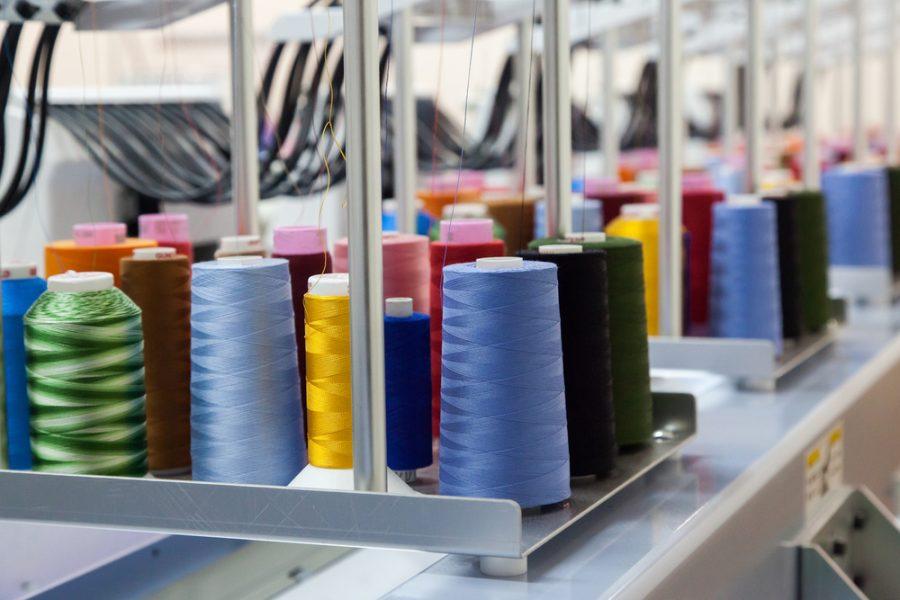
Custom embroidery is a well-known method for placing names, company titles, logos, and more onto clothing and other textiles. Because embroidery can be applied to a variety of fabrics, it’s a popular option for custom promotional items. Embroidered patches are long lasting, and give your clothing a professional appeal.
Of course, the process of embroidery — using a needle to thread designs into fabric — was around long before the first corporate promotional jacket emerged. Here, we celebrate one of our favorite methods of customizing clothing, by taking a look at the vibrant history of embroidery.
30,000 BC: First Stages of Embroidery
Primitive humans set the stage for what we know as embroidery today. By using plant fibers and animal sinew, they were able to create their own threads; and then use ivory or bones as needles to sew their clothing together.
Some of the earliest evidence of embroidery dates as far back as 30,000 BC. Fossilized remains of a Cro-Magnon showed that his clothing was enhanced with rows of ivory beads — it’s possible this was one of the first instances of bead embroidery, or at least the concept that led to developing this method.
3,500 BC: Modern Embroidery Takes Shape
Embroidery as we know it today can be traced back to numerous civilizations, with some of the oldest known pieces originating from Egypt. As far back as 3,500 BC, the Chinese were using embroidery as an art form. Pottery, paintings, and sculptures from 3,000 years ago show people from Syrian, Greek, and Babylonian societies wearing embroidered clothing.
In these ancient societies, embroidered clothing was often a mark of wealth; but the craft wasn’t used only for prestige. Embroiderers also recorded historical events into fabric, such as in the case of the Bayeux Tapestry. Multiple civilizations developed their own forms of embroidery during these periods, including citizens of Mexico and countries around the Mediterranean.
1,000 AD: Embroidery Takes Off Across Europe
Sweden’s earliest known forms of embroidery date back to around the 9th and 10th century, but it wasn’t until around 1,000 AD that embroidery really took off throughout Europe. At this time, Christianity was spreading across many countries — many churches and high clergymen commissioned embroidered garments, wall hangings, and tablecloths as a demonstration of their wealth.
1800s: The Industrial Revolution Takes Embroidery Mainstream
Thanks to the Industrial Revolution, embroidery became more popular among the general population during the 1800s. Now that embroidered fabric didn’t have to be hand-crafted, it became less of an upper-class luxury. The first automated embroidery machines combined teams of skilled embroiderers with machine looms during the mid-1800s in France. Machine-made embroideries grew in popularity throughout the second half of the 19th century.
It was during this time that embroiderers began working with cheaper materials than silk, which helped cut costs and provide embroidery to lower-class individuals. It was also around this time that needlework became a popular pastime; people began using patterns and charts to replicate designs.
Embroidery Today
Today, embroidery is done mainly by machines, which can be used to mass produce embroidered shirts and other clothing pieces, or embroidered patches with a logo, monogram, or emblem. People also still enjoy embroidery — such as cross stitching — as a hobby and art form.
As far as machine embroidery goes, there are two types commonly used today. The first is free motion embroidery, which uses a basic zigzag sewing machine to create designs. Skilled machine operators are needed to create these types of designs. The second type of machine embroidery is computerized embroidery, which is often used for commercial purposes. In computerized embroidery, the machine reads an embroidery design file and automatically stitches the design onto fabric. If you order embroidered shirts or other promotional products for your business, it’s likely they’ll be embroidered using a computerized machine.
The history of embroidery is quite fascinating, when you consider how far we’ve come from plant-fiber threads and ivory needles, to the computerized machines that expertly and precisely stitch intricate logos onto fabric. The only question now is: Where will we go next?
